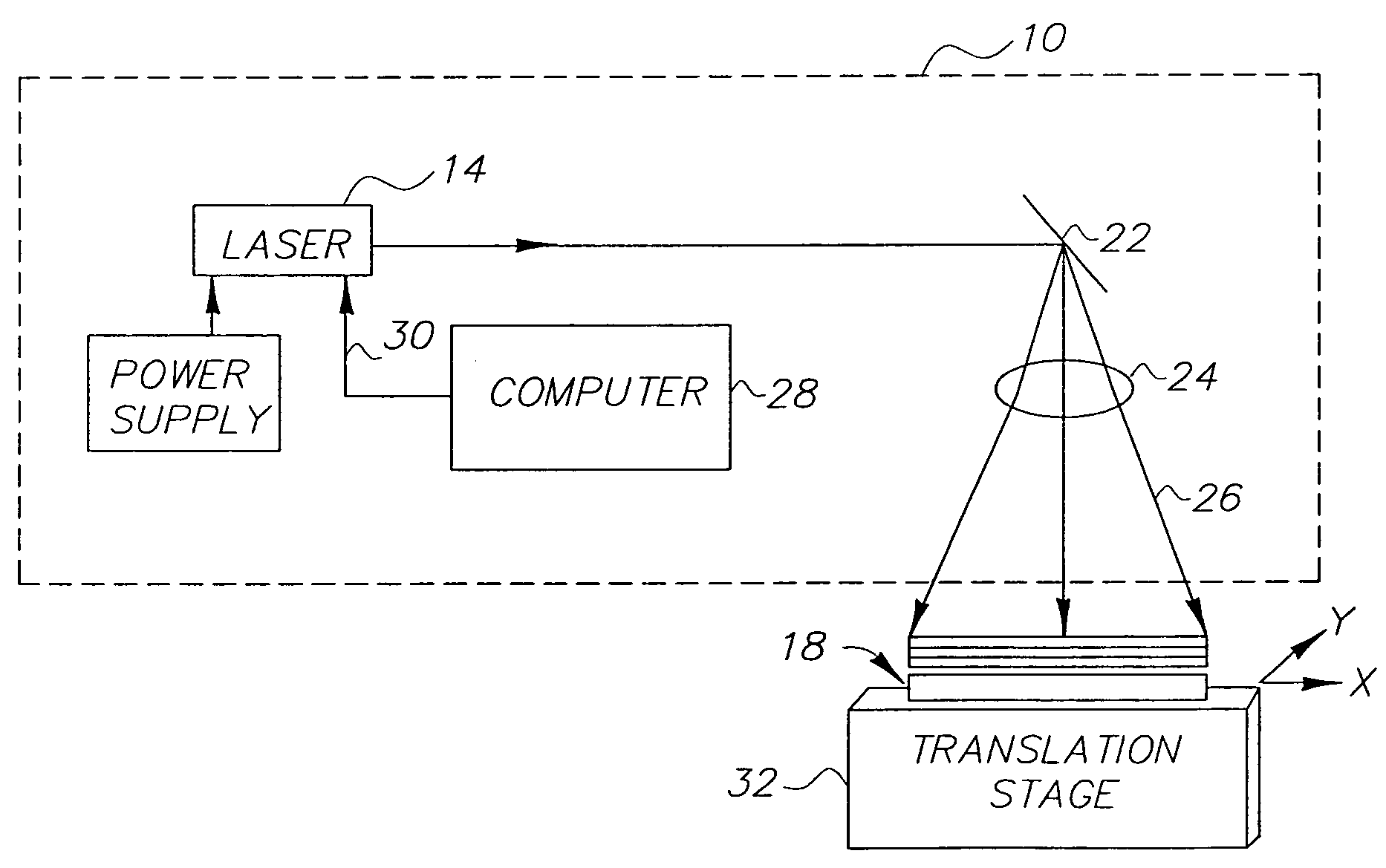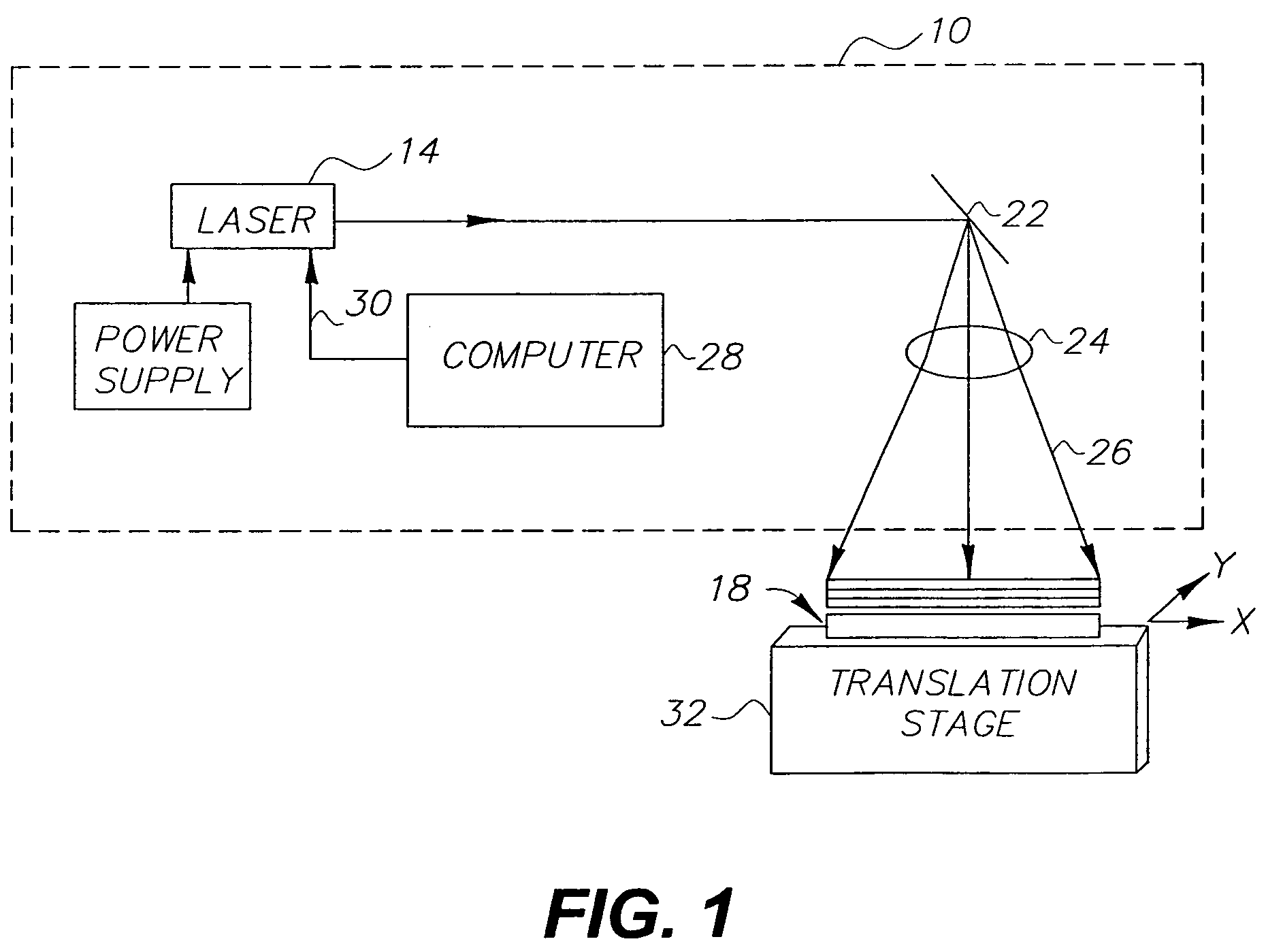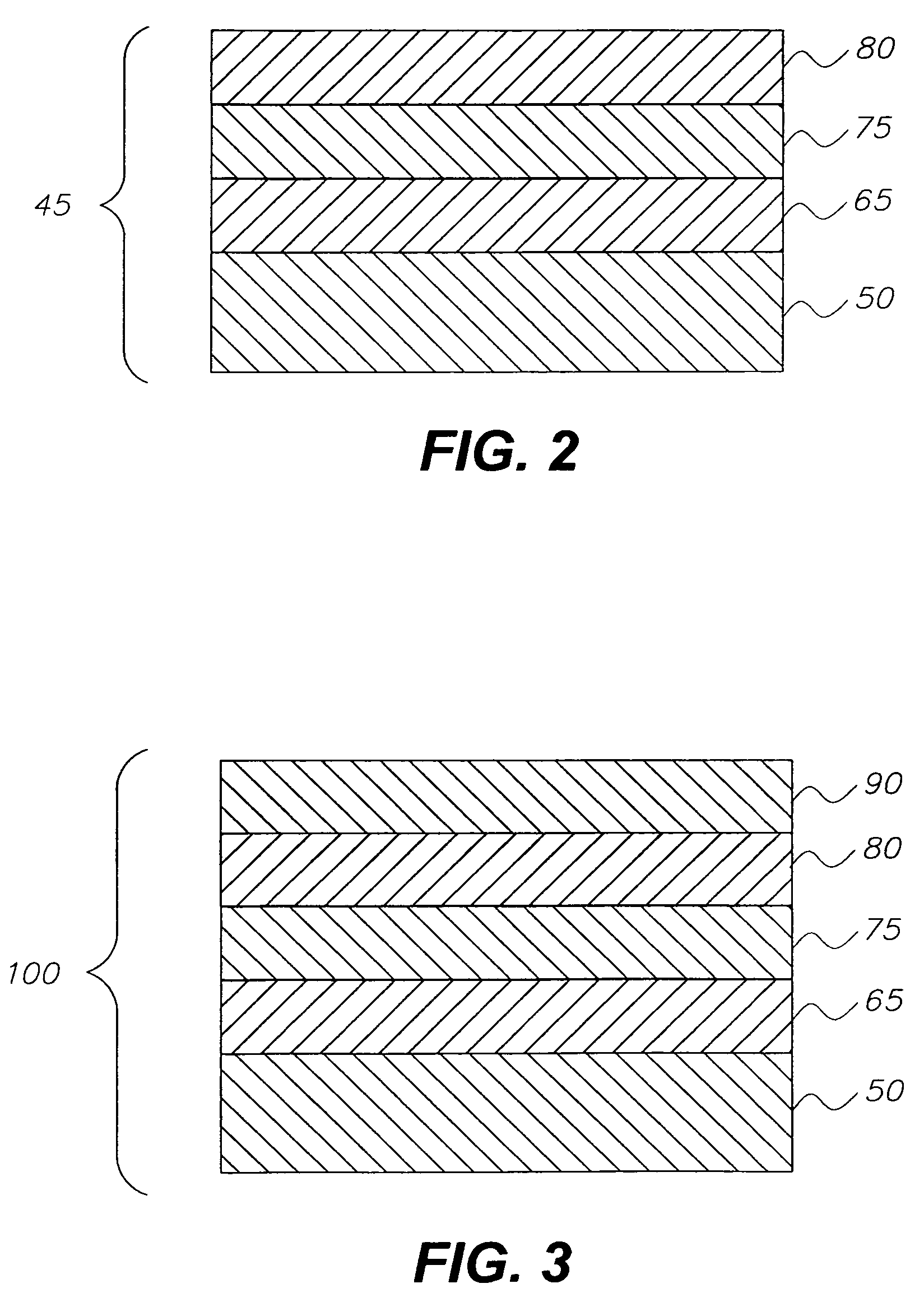Forming a patterned metal layer using laser induced thermal transfer method
a technology of laser induced thermal transfer and metal layer, which is applied in the direction of electric/magnetic/electromagnetic heating, light absorption dielectrics, instruments, etc., can solve the problems of substrate deformation, high cost, and difficult to achieve lateral dimensions less than 100 microns
- Summary
- Abstract
- Description
- Claims
- Application Information
AI Technical Summary
Benefits of technology
Problems solved by technology
Method used
Image
Examples
example 1
[0043]A donor element was constructed in the following manner:[0044]An antireflection layer of 40 nm of silicon and an absorption layer of 40 nm of chromium were vacuum-deposited in that order onto a 51 micron polyimide donor substrate. 20% of gold nanoparticles of size of 2-4 nm and 1-2% of IR absorbing dye were dispersed in 40 / 60 mixed solvent of ethanol / toluene and coated on the chrominum layer with a wet lay-down of 1 cc / sq ft. The sample was then dried at room temperature for 10 minutes to give a final thickness of about 300-500 nm.
[0045]Receiving Substrate[0046]The receiving substrate used in the invention was 4 mil PET films with a 0.3 um of gelatin coating on the receiving side of the surface.
[0047]Annealed and Transferred of Metal Nanoparticle Layer[0048]The metal nanoparticulate layer are placed in contact with the gel layer of the receiving substrate and held down by using the vacuum. In regions in which annealing and transferring is desired, a laser writer containing a l...
example 2
[0049]A donor element and a receiving substrate satisfying the requirements of this invention was constructed as Example 1, except that 20% of silver nanoparticle with size of 50-70 nm (from CIMA Nanotech of St. Paul, Minn.) was dispersed in ethylene glycol butyl ether acetate solution containing 2% of IR absorbing dye.
example 3
[0050]A donor element and a receiving substrate satisfying the requirements of this invention was constructed as Example 1, except that 20% of silver nanoparticle size of 50-70 nm (from CIMA Nanotech of St. Paul, Minn.) was dispersed in water and ethanol mixed solvent containing 2% of IR absorbing dye.
The results of laser annealed and transferred patterned Au and Ag conductors on gel coated PET are shown in the Table 1.
[0051]
TABLE 1Wet Lay-downDry ThicknessResistivity (Ohm-Coating Solution(cc / sq ft)(um)cm)Example 110.37.5 × 10−5Example 210.53.6 × 10−5Example 310.53.2 × 10−5
[0052]Table 1 shows that upon laser transferring and annealing, the resistivity transferred metal layers on the gel coated PET drops to a very conductive state. The nanoparticle layers not irradiated by the laser remain nonconductive on the donor substrates due to the lack of sintering.
PUM
| Property | Measurement | Unit |
|---|---|---|
| glass transition temperature | aaaaa | aaaaa |
| glass transition temperature | aaaaa | aaaaa |
| sizes | aaaaa | aaaaa |
Abstract
Description
Claims
Application Information
 Login to View More
Login to View More - R&D
- Intellectual Property
- Life Sciences
- Materials
- Tech Scout
- Unparalleled Data Quality
- Higher Quality Content
- 60% Fewer Hallucinations
Browse by: Latest US Patents, China's latest patents, Technical Efficacy Thesaurus, Application Domain, Technology Topic, Popular Technical Reports.
© 2025 PatSnap. All rights reserved.Legal|Privacy policy|Modern Slavery Act Transparency Statement|Sitemap|About US| Contact US: help@patsnap.com



